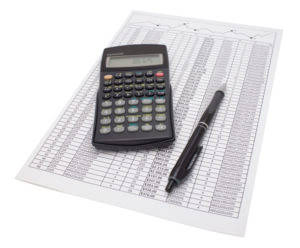Free Cash Flow to Firm FCFF Formulas, Definition & Example

The generic Free Cash Flow (FCF) Formula is equal to Cash from Operations minus Capital Expenditures. FCF represents the amount of cash generated by a business, after accounting for reinvestment in non-current capital assets by the company. This figure is also sometimes compared to Free Cash Flow to Equity or Free Cash Flow to the Firm (see a comparison of cash flow types). The D&A and change in NWC adjustments how to calculate cfo to net income could be thought of as being analogous to calculating the cash flow from operations (CFO) section of the cash flow statement. Then, the interest expense is added back since it pertains only to lenders. FCFF, or Free Cash Flow to Firm, is the cash flow available to all funding providers (debt holders, preferred stockholders, common stockholders, convertible bond investors, etc.).
The impact of non-cash add-backs is relatively straightforward, as these have a net positive impact on cash flows (e.g. tax savings). For information pertaining to the registration status of 11 Financial, please contact the state securities regulators for those states in which 11 Financial maintains a registration filing. Under the direct method, the information contained in the company’s accounting records is used to calculate the net CFO. Operating activities are the transactions that enter into the calculation of net income.
Free Cash Flow (FCF) Formula
The better way to understand the impact of trade payables on CFO is to look for the case where trade payables have declined during the year. If during FY2020, Paushak Ltd would have had a decrease in trade payables that would have meant that it had made payments to its suppliers. Therefore, we would have deducted the decrease in trade payables as a cash outflow from the profits to calculate CFO. Inversing this logic is an easy way to understand why we add an increase in trade payables as an inflow in CFO.
- You can notice in CFO calculation in any annual report that it is calculated from PAT/PBT.
- Thus, net income has to be adjusted by adding back all non-cash expenses like depreciation, stock-based compensation, and others.
- It means that during the year, the company could get more goods from its suppliers for which it has not yet paid.
- If you notice that in MUL’s cash flow statement, the sale of investments is shown as part of CFO as well as CFI.
EBIT is an unlevered profit measure since it is above the interest expense line and does not include outflows specific to one capital provider group (e.g., lenders). The difference between the two can be traced to the fact that Free Cash Flow to Firm excludes the impact of interest payments and net increases/decreases in debt, while these items are taken into consideration for FCFE. However, the analysis in finance by the investor is not bound by any rules. You may use any formula as you deem fit for gauging the correct situation of any company. Krishna, the annual reports are prepared in a standard format as per the accounting rules of any country. Rules dictate that interest should be shown as CFF and not CFO, that’s why it is added back in net profit to arrive at CFO.
Indirect Method vs. Direct Method: What is the Difference?
Therefore, a reduction in the inventories is a cash inflow and accordingly, ₹1.64 cr has been added in the calculation of CFO for FY2020. The depreciation and amortization expense, or “D&A”, is embedded within COGS and operating expense section. But in the latter case with negative OCF, the company must seek external financing sources to meet its reinvestment spending needs, e.g. via equity and debt issuances. OCF, short for “Operating Cash Flow,” refers to the net amount of cash brought in by a company’s day-to-day operations. Hello, I am wondering why taxes of $8 were not deducted from the cash flow via the operating cashflows to get to $40 from the $48.
The CFO’s BEPS Pillar Two to-do list – Wolters Kluwer
The CFO’s BEPS Pillar Two to-do list.
Posted: Tue, 20 Jun 2023 07:00:00 GMT [source]
If you notice that in MUL’s cash flow statement, the sale of investments is shown as part of CFO as well as CFI. As sale or purchase of investments is investing activity, the entire sum received from the sale of investment is shown as part of inflow (positive entry) under CFI. In the case cited by you, the cumulative cash flow from operations (cCFO) will be higher than the cumulative net profit after tax (cPAT). The reason for the same is high depreciation, which has resulted in net losses.
thoughts on “Understanding Cash Flow from Operating Activities (CFO)”
A higher CFO is considered good as it indicates that the company has more cash inflow from daily operations and less cash outflow required for operating daily. When a company purchases long lived assets they are required to amortize (spread) the cost over a number of years. However, this does not reduce their cash, it is only an accounting expense. Therefore you need to add this expense back into net income to calculate cash flow. For example, some companies may take longer to pay their debts in order to preserve cash. Alternatively, companies may shorten the time it takes to collect sales made on credit.


